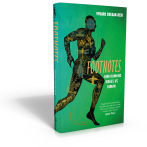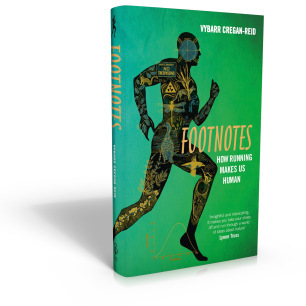Vybarr Cregan-Reid's Blog, page 2
April 28, 2016
How to get a runner’s high!
April 27, 2016
Footnotes – available for Pre-order
Footnotes: how running makes us human – Published 26th May
“Running allows me to step off life’s pathways and into the bracken; to turn my back on the fingerpost and tumble into the weeds. It has changed me so completely that, now, even the sight of a landscape painting instils in me a deep desire to step into the frame, and beyond it. To run toward the horizon, feeling the cool grass beneath my feet, and be gone.”
There has never been a book about running like Footnotes. It is packed with arguments, opinions and interviews with the world’s leading researchers into running, movement and the psychology of modern life.
Running is not just a sport. It reconnects us to our bodies and the places in which we live, breaking down our increasingly structured and demanding lives. It allows us to feel the world beneath our feet, lifts the spirit, allows our minds out to play and helps us to slip away from the demands of the modern world.
When Vybarr Cregan-Reid set out to discover why running meant so much to so many, he began a journey which would take him out to tread London’s cobbled streets, climbing to sites that have seen a millennium of hangings, and down the crumbling alleyways of Ruskin’s Venice. Footnotes transports you to the cliff tops of Hardy’s Dorset, the deserted shorelines of Seattle, the giant redwood forests of California, and to the world’s most advanced running laboratories and research centres, using debates in literature, philosophy and biology to explore that simple human desire to run.
Liberating and inspiring, this book reminds us why feeling the earth beneath our feet is a necessary and healing part of our lives.
What others are saying
“Insightful and intoxicating. Vybarr Cregan-Reid’s book makes you take your shoes off and run through a world of ideas about nature.” (Lynne Truss)
“It’s hard to imagine a more compelling or poetic running companion than Vybarr Cregan-Reid. He inspires us not just to run, but to be truly alive while we are doing it.” (Scarlett Thomas)
“A brilliant, broad-ranging and beautiful book. Like a great run into a wild landscape, it opens the heart and the mind, taking you off into the unknown, delighting at every turn and returning you changed for the better.” (Rob Cowen – author of Common Ground)
“Here is a book in which the striding energy of the prose matches its subject.” (Iain Sinclair)
“Wonderfully authoritative vindication of what ought to be a self-evident truth: that running should be about being alive, not being a consumer.” (Richard Askwith – author of Running Free: A Runner’s Journey Back to Nature)
NOW AVAILABLE FOR PRE-ORDER – CLICK HERE
(Although it is cheaper at the Guardian Bookshop – click here)
Hardcover: 352 pages
Publisher: Ebury Press
ISBN-10: 0091960193
ISBN-13: 978-0091960193


April 22, 2016
THU, 19 MAY AT 18:00, LONDON Running Wilde: outdoor exercise & the peculiar history of the treadmill By: Birkbeck School of Arts
March 4, 2016
Controlling the Environment
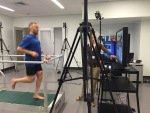


Most of my book, Footnotes, is about how important it is that we have regular access to an environment that possesses natural aspects, being on that permits the kind of mental repose that can only really come from those places. I also discuss in my book, the weird history of treadmills and that by running on them we, among other things, become part of a longer history of corporal punishment that goes back a couple of centuries. I don’t mean to be hard on the gym, and treadmills in particular, because they do have their uses. It is the easiest place to do strength training after all.
Today, going to the gym, I decided to run a route there, do my weights, and do a short run back (the last bit of course was never going to happen – and it didn’t). But the environment where I live is heavy suburban, and I had to cross tens of roads on my run. It is because of things like this that we are not mentally recharged by these runs. Our directed attentional faculties become depleted by having to assess the numerous threats that busy suburban environments fling at us in the shape of killer-boxes of steel and glass that vroom right by us. Within a few feet of the cars, I found myself holding my breath for a few steps whenever I saw fumes splutter from the ass of some diesel bus. It was a really beautiful day today, but by the time I got to the air-conditioned gym I was glad of the clean air, and the roads that I no longer had to cross, and it made it clear to me why some people prefer it to being outside.
We need more parks and green spaces that are not dominated by cars. The latter do the double of polluting the air and require us to expend mental energy in assessing their movement and intentions when we go out to move. Outside is too important to our bodies and our minds to be given over so easily to motorised commuting.


December 3, 2015
test post
October 12, 2015
Where is the Literature of Running?
Hear it HERE about 20 minutes in.
Where is the literature of Running?
When I tell people what I’ve been working on, they usually follow up with a question in a politely confused tone. “Where is the literature of running?” they want to know. Is there a hoard or some secret stash of running novels tucked away somewhere that they don’t know about (The Woman in White trainers, or Anna Karunina)? The answer is that their hunch is correct: there isn’t really a literature of running. Could Darcy have fallen for Lizzie if she had arrived at Netherfield a sweaty and puffing wreck because she had intervalled her entire way from Longbourn? Two hundred and fifty years ago, the same questions might have been asked of someone working on a book about walking.Walking and versifying have been linked since the very earliest of world literatures. In those arduous journeys from the ancient Epic of Gilgamesh, The Odyssey, or The Aeneid, walking was incidental rather than crucial to the narrative. Much later, stories were also told to pass the time to counter the boredom of a long journey (like in Chaucer’s Canterbury Tales where the pilgrims take turns in entertaining and distracting the group from their activity. As late as 1818, Jeanie Deans, from Walter Scott’s Heart of Midlothian walks the million or so steps from Edinburgh all the way to London to plead clemency for her sister, and even here, the drama is a stationary affair, something that happens in between the walks. Almost nothing is said about the experience of walking hundreds of miles barefoot on eighteenth-century rural roads. It’s not until the arrival of figures like Wordsworth, Coleridge and John Clare that walking finds its way between the lines of our verses and stories and into our hearts. Their walks became the mainstay of their poetry. Without Wordsworth’s walks, for example, there would be no ‘Tintern Abbey’, no Prelude, and we would never have what must be the most famous line of all English poetry ‘I wandered lonely as a cloud’. Later, Charles Dickens explored the drama of long walks in novels like Oliver Twist, The Old Curiosity Shop, Great Expectations and Our Mutual Friend. Thomas Hardy used our heroine’s epic walks in Tess of the D’Urbevilles to make sense of her (and our) insignificance in the landscape. And through figures like Virginia Woolf and Edward Thomas, right up to Rachel Joyce’s recent bestseller The Unlikely Pilgrimage of Harold Fry, the literature of walking is now firmly established. So where are the runners? Despite there being millions of us, and despite there being numerous novelists and writers that are committed runners (like Don DeLillo, Lionel Shriver, Joyce Carol Oates, and Scarlett Thomas), where are all the stories? Where is the literature of running? A good story unfolds at walking pace, to the rhythm of our footsteps - indeed, we are so unchallenged by the motion that, like Chaucer’s pilgrims, we can even tell the stories as we walk. But the intensity of running prohibits this. And it is what makes these two forms of movement so very different. Running might have a beginning, middle and an end, but it is not a story, it is too intensely embodied. The sensory overload of how the grass feels against the soles of your feet, of the air hitting your skin and pumping in and out of your lungs, of your eyes scanning the horizon, all as you stroke the pinion of the tall grass, these reflections are more at home in poetry, the essay, or in nature writing, than they are in the novel.
Just as there was a renaissance for writing about walking around two centuries ago, I think we are just now working out how to write about running with authors like Richard Askwith’s Running Free, Mark Rowlands’ Running with the Pack, Haruki Murakami’s What I Talk About When I Talk About Running, and in the essays of people like Hayden Lorimer. Each of these writers is able to focus on the intensity, ephemerality, and the sensual immediacy of running without feeling the need to mangle their reflections into a literary form like the novel. These are the books that are laying the ground for a new kind of writing about the body, the landscape, and the ways that we cut through it when we run.
September 4, 2015
Come share your tales of poetry in motion

Footnotes: Running Experiences
Come share your tales of poetry in motion at this spoken word Open Mic night in Colchester
Tues, 8th September at The Minories Art Gallery Colchester, 7.30. £4 on the door
This is a new event that aims to bring together runners of all abilities to share their stories, successes, failures, sprains, sprints and splints. Come and take part by reading a short essay, story, or poem. Have an opportunity to express your way of running, and how it impacts on you, your emotional and physical experiences.
Featured guests are:
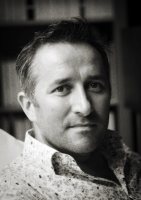
Writer, Vybarr Cregan-Reid – will read from his forthcoming book, Footnotes: running, landscape & the way we live now. The book is a psychogeography of running that darts between poetry, philosophy, neuroscience, history, paleoanthropology, and biomechanics. It is a running book for those that love the new nature writing. Vybarr has written for The Guardian, The Telegraph, and will be reading from his work on Radio 4’s Open Book next week. He is a Senior Lecturer in English at the University of Kent.
“When Vybarr Cregan-Reid set out to discover why running meant so much to so many, he began a journey which would take him out not only to tread London’s streets, but climbing to sites that have seen a millennium of hangings, or down the crumbling alleyways of Ruskin’s Venice. Footnotes will transport you to the cliff tops of Hardy’s Dorset, the deserted shorelines of Seattle, the giant redwood forests of California, and to the world’s most advanced running laboratories and research centres, using debates in literature, philosophy and biology to explore that simple human desire to run.”

Artist, Veronique Chance – she will be telling tales of her astounding M25 Great Orbital Run a solitary run and artwork that took place in March2012 over nine consecutive days around the inside boundary of the M25 London Orbital. Véronique will read extracts from her daily blog entries written during the time period of the run. A speeded up recorded version of the work will provide a projected backdrop. Veronique is based in London and has a studio at APT studios, Deptford. She has shown artworks nationally and internationally, including China, Canada, Korea, Italy, Spain, Belgium, Holland and France. She is a Senior Lecturer and Course Leader for the MA Fine and MA Printmaking courses at Anglia Ruskin University, Cambridge and completed her PhD at Goldsmith’s College in 2012.
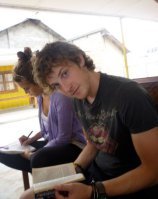
Exercise scientist, Dan Gallagher – has research interests in ‘green exercise’ and is particularly interested in ‘adherence’ to exercise programmes and how this may be tied up with our relationship with the environment. He is about to begin a new research role at the University of Essex which will assess the current fitness levels of primary school children, relating to the state of PE in Essex Schools. He will take part in a Q&A at this event where he will talk about the huge difference that our exercise environment has on the emotional and psychological impact of our seemingly everyday routines.
The evening will re-engage audiences with their environment and themselves, taking the audience from their demanding and structured lives on to new pathways and in to the wild. Reconnecting them to landscape and encouraging their minds to play, and to have a beer and a chat about running.


Footnotes: Running ExperiencesCome share your tales of po...

Footnotes: Running Experiences
Come share your tales of poetry in motion at this spoken word Open Mic night in Colchester
Tues, 8th September at The Minories Art Gallery Colchester, 7.30. £4 on the door
This is a new event that aims to bring together runners of all abilities to share their stories, successes, failures, sprains, sprints and splints. Come and take part by reading a short essay, story, or poem. Have an opportunity to express your way of running, and how it impacts on you, your emotional and physical experiences.
Featured guests are:
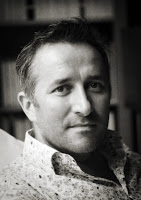 Writer, Vybarr Cregan-Reid - will read from his forthcoming book, Footnotes: running, landscape & the way we live now. The book is a psychogeography of running that darts between poetry, philosophy, neuroscience, history, paleoanthropology, and biomechanics. It is a running book for those that love the new nature writing. Vybarr has written for The Guardian, The Telegraph, and will be reading from his work on Radio 4's Open Book next week. He is a Senior Lecturer in English at the University of Kent.
Writer, Vybarr Cregan-Reid - will read from his forthcoming book, Footnotes: running, landscape & the way we live now. The book is a psychogeography of running that darts between poetry, philosophy, neuroscience, history, paleoanthropology, and biomechanics. It is a running book for those that love the new nature writing. Vybarr has written for The Guardian, The Telegraph, and will be reading from his work on Radio 4's Open Book next week. He is a Senior Lecturer in English at the University of Kent."When Vybarr Cregan-Reid set out to discover why running meant so much to so many, he began a journey which would take him out not only to tread London’s streets, but climbing to sites that have seen a millennium of hangings, or down the crumbling alleyways of Ruskin's Venice. Footnotes will transport you to the cliff tops of Hardy's Dorset, the deserted shorelines of Seattle, the giant redwood forests of California, and to the world’s most advanced running laboratories and research centres, using debates in literature, philosophy and biology to explore that simple human desire to run."
 Artist, Veronique Chance - she will be telling tales of her astounding M25 Great Orbital Run a solitary run and artwork that took place in March2012 over nine consecutive days around the inside boundary of the M25 London Orbital. Véronique will read extracts from her daily blog entries written during the time period of the run. A speeded up recorded version of the work will provide a projected backdrop. Veronique is based in London and has a studio at APT studios, Deptford. She has shown artworks nationally and internationally, including China, Canada, Korea, Italy, Spain, Belgium, Holland and France. She is a Senior Lecturer and Course Leader for the MA Fine and MA Printmaking courses at Anglia Ruskin University, Cambridge and completed her PhD at Goldsmith's College in 2012.
Artist, Veronique Chance - she will be telling tales of her astounding M25 Great Orbital Run a solitary run and artwork that took place in March2012 over nine consecutive days around the inside boundary of the M25 London Orbital. Véronique will read extracts from her daily blog entries written during the time period of the run. A speeded up recorded version of the work will provide a projected backdrop. Veronique is based in London and has a studio at APT studios, Deptford. She has shown artworks nationally and internationally, including China, Canada, Korea, Italy, Spain, Belgium, Holland and France. She is a Senior Lecturer and Course Leader for the MA Fine and MA Printmaking courses at Anglia Ruskin University, Cambridge and completed her PhD at Goldsmith's College in 2012.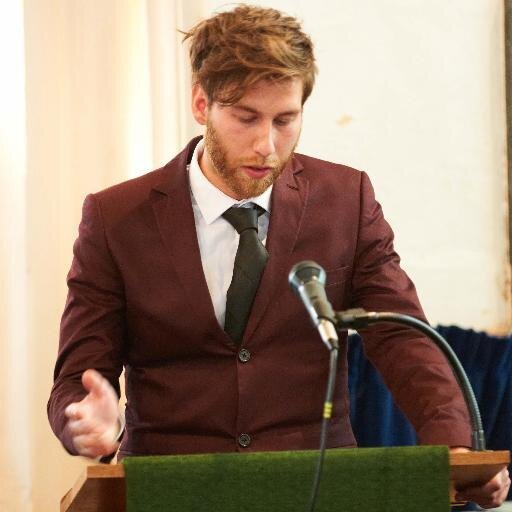 Exercise scientist, Mike Rogerson - will be explaining some of the latest research from the University of Essex's Green Exercise Research Group. How can our choice of environmental setting influence desirable outcomes of running? Mike is a completion-year PhD candidate with previous degrees in Sports & Exercise Science (BSc Hons) and in Psychology (MSc). He has guest lectured on his area of expertise at Queensland University of Technology and Technische Universität München, and holds a seat on parkrun’s Research Board. Mike’s research has been published in scientific journals and featured via interview by Reuters and Cycling Fitness Magazine.
Exercise scientist, Mike Rogerson - will be explaining some of the latest research from the University of Essex's Green Exercise Research Group. How can our choice of environmental setting influence desirable outcomes of running? Mike is a completion-year PhD candidate with previous degrees in Sports & Exercise Science (BSc Hons) and in Psychology (MSc). He has guest lectured on his area of expertise at Queensland University of Technology and Technische Universität München, and holds a seat on parkrun’s Research Board. Mike’s research has been published in scientific journals and featured via interview by Reuters and Cycling Fitness Magazine.The evening will re-engage audiences with their environment and themselves, taking the audience from their demanding and structured lives on to new pathways and in to the wild. Reconnecting them to landscape and encouraging their minds to play, and to have a beer and a chat about running.
August 20, 2015
Things I love about running – item #422
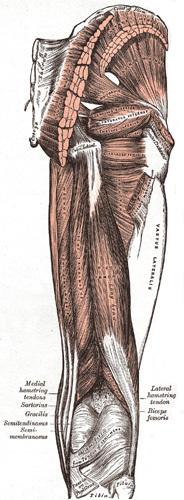
One of the reasons that running has become so adhered to my personality is that for all its monotonous appearance, it is one of the most complex things that the body can do. Throughout my adult life I have been relearning how to run (I think we unlearn the skill through childhood). And bit by bit, my form has become more evenly balanced and more symmetrical. But at the age of 46, I am still learning quite big things about quite big muscles.
When I went to Boston earlier this year on an Arts Council trip, I spent some time with Dr Irene Davis, one of the world’s most renowned experts in the biomechanics of running, and among other things, she let me sit in on a patient appraisal. The patient had recently done an Iron Man but had been left with a nagging bit of ITB pain. His initial consultation lasted three hours in which he was carefully assessed by Irene and another physical therapist. Their conclusions drawn, he had some imbalances, but the main thing was that he wasn’t firing his glutes when running.
The tripartite gluteal muscles are the largest muscle group in the body, and our biggest muscle, the ‘gluteus maximus’, is what gives our bums their shape. This is a lot of muscle to be doing nothing while running. If you are not using it you may as well stick ten kilos of sand in a backpack and carry that, too. Irene’s aim was to retrain this runner focussing on a number of things, but mainly to get his ass working. She said that in some extreme circumstances, she had even grabbed a butt and said something like ‘come on, squeeze there!’ in order to help runners understand what they needed to do. (There is nothing like haptic feedback for learning new motor skills).
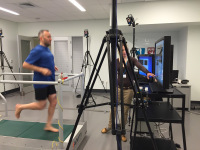
biomechanics assessment
from the Spaulding National Running Center.
I learned so many things about running and runners in the short time that I spent with Irene at the Spaulding National Running Center (some are in my book and some are in article due out in the Telegraph in a fortnight). But having ‘active glutes’ left me scratching my head. I tried to feel if I had? I tried squeezing my butt cheeks together when I ran like I was holding a coin up there or something, but that just felt impossibly peculiar (and must have looked even stranger as I tried to run with semi-locking knees). Then, today, the penny dropped (not literally because I never actually tried that). I didn’t need someone highly trained to lean over a treadmill at a clinic and grab my ass, I could grab my own. So here, in the old fishing village of Aldeburgh, on a rainy and windy August day, I did just that. Checking that I had no audience, I put one hand on a cheek and could feel that sure enough, my glutes were not firing. All was soft as a favoured pillow.
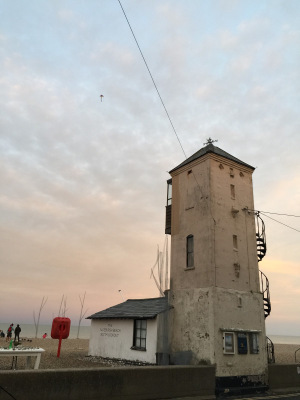
The look out in Aldeburgh, the view from my window
I tried tensing the muscles again, but this didn’t work and messed up my form too much. So I started pushing off a bit more from my glutes, and it was really easy to feel the difference. I felt my pelvis straighten (lifting my tendency to anterior pelvic tilt). I felt stronger at toe-off. My centre of gravity felt like it moved forward. It seemed to fix things with my form that usually require focus and concentration. That’s it!
It’s early days, yet – so I don’t know what difference it will make. And all changes to form have to be done slowly. But as I returned to the Centre of town I toned down the butt feeling though was able to continue firing the muscle group. I urge you to give it a go.
I am just so amazed that something so seemingly simple as running can still be offering up new things to try after thousands and thousands and thousands of miles have gone by under foot.


Things I love about running - item #422

One of the reasons that running has become so adhered to my personality is that for all its monotonous appearance, it is one of the most complex things that the body can do. Throughout my adult life I have been relearning how to run (I think we unlearn the skill through childhood). And bit by bit, my form has become more evenly balanced and more symmetrical. But at the age of 46, I am still learning quite big things about quite big muscles.
When I went to Boston earlier this year on an Arts Council trip, I spent some time with Dr Irene Davis, one of the world's most renowned experts in the biomechanics of running, and among other things, she let me sit in on a patient appraisal. The patient had recently done an Iron Man but had been left with a nagging bit of ITB pain. His initial consultation lasted three hours in which he was carefully assessed by Irene and another physical therapist. Their conclusions drawn, he had some imbalances, but the main thing was that he wasn't firing his glutes when running.
The tripartite gluteal muscles are the largest muscle group in the body, and our biggest muscle, the 'gluteus maximus', is what gives our bums their shape. This is a lot of muscle to be doing nothing while running. If you are not using it you may as well stick ten kilos of sand in a backpack and carry that, too. Irene's aim was to retrain this runner focussing on a number of things, but mainly to get his ass working. She said that in some extreme circumstances, she had even grabbed a butt and said something like 'come on, squeeze there!' in order to help runners understand what they needed to do. (There is nothing like haptic feedback for learning new motor skills).
I learned so many things about running and runners in the short time that I spent with Irene at the Spaulding National Running Center (some are in my book and some are in article due out in the Telegraph in a fortnight). But having 'active glutes' left me scratching my head. I tried to feel if I had? I tried squeezing my butt cheeks together when I ran like I was holding a coin up there or something, but that just felt impossibly peculiar (and must have looked even stranger as I tried to run with semi-locking knees). Then, today, the penny dropped (not literally because I never actually tried that). I didn't need someone highly trained to lean over a treadmill at a clinic and grab my ass, I could grab my own. So here, in the old fishing village of Aldeburgh, on a rainy and windy August day, I did just that. Checking that I had no audience, I put one hand on a cheek and could feel that sure enough, my glutes were not firing. All was soft as a favoured pillow.
I tried tensing the muscles again, but this didn't work and messed up my form too much. So I started pushing off a bit more from my glutes, and it was really easy to feel the difference. I felt my pelvis straighten (lifting my tendency to anterior pelvic tilt). I felt stronger at toe-off. My centre of gravity felt like it moved forward. It seemed to fix things with my form that usually require focus and concentration. That's it!
It's early days, yet - so I don't know what difference it will make. And all changes to form have to be done slowly. But as I returned to the Centre of town I toned down the butt feeling though was able to continue firing the muscle group. I urge you to give it a go.
I am just so amazed that something so seemingly simple as running can still be offering up new things to try after thousands and thousands and thousands of miles have gone by under foot.
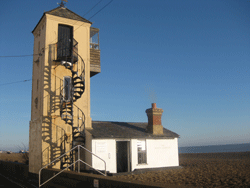
Vybarr Cregan-Reid's Blog
- Vybarr Cregan-Reid's profile
- 31 followers


